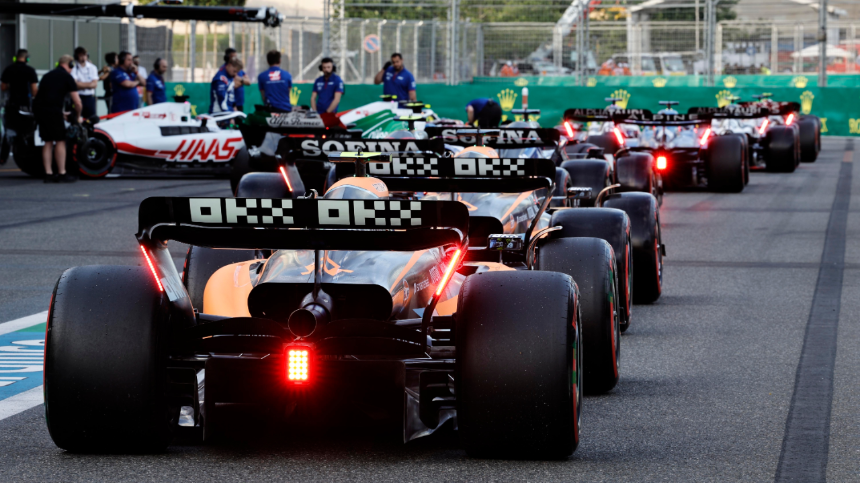In recent years, the world of motorsport has been undergoing a remarkable transformation, and Formula 1 is no exception. As environmental concerns grow and industries across the globe focus on reducing their carbon footprint, Formula 1 has begun embracing eco-friendly practices to ensure the future sustainability of the sport. Once known for its high-speed racing and fuel-guzzling cars, Formula 1 is now leading the way in introducing innovative technologies and greener methods to lessen its environmental impact.
This shift is not only a response to the growing demand for sustainability but also a reflection of Formula 1’s commitment to pioneering technology and innovation. In this article, we’ll explore how eco-friendly practices are being integrated into the sport, from hybrid engines to energy-efficient manufacturing processes, and why these efforts are so crucial for the future of motorsport.
The Need for Change: Why Formula 1 is Adopting Eco-Friendly Practices

Formula 1 has long been a sport that pushes technological boundaries, but this hasn’t always aligned with environmental sustainability. Historically, F1 cars were designed to prioritize speed and performance over efficiency, leading to significant emissions and energy consumption. However, the global focus on reducing carbon emissions and fighting climate change has put pressure on industries to adopt more responsible practices, and Formula 1 is no different.
In 2019, Formula 1 announced an ambitious plan to become carbon-neutral by 2030, a goal that has accelerated the adoption of eco-friendly practices throughout the sport. This plan focuses not only on the cars themselves but also on the wider operations of Formula 1, including logistics, event management, and manufacturing processes. By leading the charge in sustainability, Formula 1 aims to set a new standard for other motorsports and industries to follow.
Hybrid Engines: A Milestone in Eco-Friendly Practices
One of the most significant steps towards embracing eco-friendly practices in Formula 1 has been the introduction of hybrid power units. Since 2014, all F1 cars have been equipped with hybrid engines that combine a traditional internal combustion engine with an electric motor. This hybrid technology has drastically reduced the fuel consumption and emissions of Formula 1 cars while maintaining the high performance that fans expect.
The hybrid power units used in Formula 1 are among the most efficient engines in the world, converting more than 50% of the fuel’s energy into usable power, compared to around 30% for a typical road car. This efficiency is a crucial aspect of Formula 1’s eco-friendly practices, as it directly reduces the environmental impact of the cars on the track.
These hybrid engines have also paved the way for further advancements in energy recovery systems. For example, Formula 1 cars now use kinetic energy recovery systems (KERS) to harness energy generated during braking and store it in batteries for later use. This innovation not only boosts performance but also contributes to the sport’s efforts to adopt more sustainable technology.
Sustainable Fuels: The Next Step in Eco-Friendly Practices
While hybrid engines have been a major milestone in Formula 1’s journey towards sustainability, the sport is now looking towards another breakthrough—sustainable fuels. As part of its 2030 carbon-neutral goal, Formula 1 has committed to developing 100% sustainable fuels that can be used not only in F1 cars but also in everyday vehicles.
Sustainable fuels, such as biofuels and synthetic fuels, are produced from renewable sources, significantly reducing the carbon emissions associated with traditional fossil fuels. Formula 1’s move towards sustainable fuels represents a bold step in its eco-friendly practices, as it has the potential to transform the automotive industry as a whole.
In 2022, Formula 1 introduced a new fuel blend known as E10, which contains 10% renewable ethanol. While this is just the first phase of the sport’s transition to fully sustainable fuels, it demonstrates Formula 1’s commitment to reducing its environmental impact through the adoption of eco-friendly practices. By 2026, the sport plans to have all cars running on 100% sustainable fuel, marking a major leap forward in the quest for sustainability.
Reducing the Carbon Footprint of Formula 1 Events
In addition to the cars themselves, Formula 1 has also focused on reducing the environmental impact of its events. The logistics of transporting teams, equipment, and personnel around the world for a global race calendar contribute significantly to the sport’s carbon footprint. However, Formula 1 is now implementing a range of eco-friendly practices to make its operations more sustainable.
One of the key strategies has been optimizing the logistics of transporting equipment. By using more efficient transportation methods and consolidating shipping where possible, Formula 1 has already made strides in cutting down on emissions related to travel. Furthermore, the sport has committed to using biofuels for its freight vehicles, ensuring that even the logistics behind the races are aligned with the sport’s eco-friendly practices.
Sustainability also extends to the races themselves. Formula 1 has implemented several initiatives to make its race events greener, such as reducing single-use plastics, improving waste management, and promoting the use of renewable energy at race venues. These measures not only help to lower the environmental impact of Formula 1 events but also raise awareness among fans about the importance of sustainable living.
Partnerships and Collaboration in Formula 1’s Eco-Friendly Practices
One of the driving forces behind Formula 1’s sustainability efforts has been its partnerships with companies that share a commitment to eco-friendly practices. Many of Formula 1’s teams are now collaborating with technology firms and energy companies to develop greener technologies and reduce their carbon footprint.
For example, Mercedes-AMG Petronas Formula One Team has partnered with green energy providers to power its factories with renewable energy, significantly reducing its reliance on fossil fuels. Similarly, Ferrari has made strides in its environmental sustainability efforts by investing in more efficient manufacturing processes and exploring new materials that are more environmentally friendly.
These partnerships are essential in driving innovation within the sport and ensuring that eco-friendly practices remain at the forefront of Formula 1’s development. By working together with external partners, Formula 1 teams are contributing to a more sustainable future for motorsport and the automotive industry as a whole.
The Role of Fans in Supporting Eco-Friendly Practices
While Formula 1 has made great strides in adopting eco-friendly practices, the sport also recognizes the importance of engaging its fan base in the sustainability journey. The Formula 1 community spans millions of people worldwide, and by promoting eco-conscious behavior among its fans, the sport can amplify its positive environmental impact.
Formula 1 has introduced several initiatives to encourage fans to adopt more sustainable behaviors, such as offering eco-friendly travel options to race events, reducing waste at fan zones, and promoting digital ticketing to cut down on paper usage. By making sustainability a central theme of the fan experience, Formula 1 is not only reducing its own environmental impact but also inspiring positive change among its supporters.
Conclusion
Formula 1 is undergoing a transformative shift as it embraces eco-friendly practices and works towards a more sustainable future. From hybrid engines and sustainable fuels to greener event logistics and partnerships with environmentally conscious companies, the sport is leading by example in the race to combat climate change. As the world of motorsport evolves, Formula 1’s commitment to sustainability will play a crucial role in shaping the future of racing and the automotive industry.
By focusing on innovation and responsibility, Formula 1 is proving that even a sport synonymous with speed and competition can prioritize the environment. As the sport continues to push technological boundaries, its adoption of eco-friendly practices sets a powerful precedent for other industries to follow, ensuring that racing can remain thrilling without compromising the planet.










